How physical fitness supports my creativity and my work as a writer
How physical fitness at age 53 supports my creativity and my work as a writer—with pilates, body weight conditioning, calisthenics, trail running, and...paragliding.
Just a couple of months ago, I wrote about a horrible attack of a sciatica that laid me out for two weeks straight and reminded me how devastating it is to be even partially physically debilitated. That episode had its roots in an injury that I sustained more than 20 years ago, the reason for which I knew just as well then as I do now: a lack of enough real physical fitness to do the things I was doing without injuring myself.
I’ve always been a reasonably strong person, or so I thought, but in early life, I never developed any sort of habit of athleticism. I would do what I felt like, whenever I felt like it—and so even if I was often doing things that sound athletic, such as skateboarding, rock climbing, and kitesurfing, the fact is that I was depending on the strength that comes with youth, which, along with a reasonably robust constitution, has let me get away with a lot.
…With some rather notable exceptions, like the the windsurfing trip over the Y2K new year that resulted in a blown L5-S1 disc, which, for much of my thirties and forties, had me walking around with level 2-5 pain much of the time, avoiding going to rock shows because it hurt too much to stand for more than half an hour, and always being sure to carry at least one little tab of Tramadol around in the coin of my jeans. In the end, the price I paid was more than it was worth to get away with initially—and that’s a lesson that keeps on giving.
There is a certainly part of me that likes getting something for free, but of course there ain’t really much that you can get gratis at all, aside from getting outside—and the occasional little something filched from the cookie jar.
After that recent knockdown, I got an overpriced MRI, mostly so I could get a prescription for 10% topical ketamine—something that a friend had recommended years before and sounded so magic that I was willing to do whatever it took to get my hands on some. Getting an MRI is kind of like testing yourself for Covid when relatives are already on the plane on their way for a visit. Do you really want to know? The write-up from the radiologist can be taken either as a yellow-alert warning of spinal decay and serious nerve damage or a report of nothing much beyond the usual deterioration that one would expect to see in a middle-aged guy—and both are true. Most of us do have back damage, and it can be totally debilitating, or it can be invisible. I’ve gone from zero pain to 100% pain back to zero again quite a few times, and I know it’s not because the bones in my spine have somehow rearranged themselves overnight.
Having an image of the inside of my lumbar self did provide some reassurance that I wasn’t about to slice my spinal cord in two, and it also gave my GP the justification he needed to write the script that I asked for. Well, as I said, the ketamine sure sounded interesting, but by the time I got the goo, the pain had subsided to the point that I didn’t want to waste any running a test. The pain is gone, and I have this rather expensive tube of cream waiting for a relapse that I hope never happens—although the $120 that I spent, plus a grand for the MRI, almost makes me wish for a reason to try it out.
The real message I got was that running six, eight or ten miles and going to yoga a couple of times a week wasn’t enough to keep me pain free.
I’ve known this for a long long time, but I was still trying to get away with it. The voice of “I don’t want to,” and “I can’t,” have been strong for me in certain realms of life for a long, long time. It comes up in recent years perhaps most loudly and clearly when it comes to working out, but when I stop to trace the roots deeper, that complaint of “I don’t want to,” completes itself as “I don’t want to do it alone,” and “I can’t do it alone,” not just in terms of exercise, but in a much more general sense. Those were the discouraging refrains that would come up so often during stretches of depression whenever I was offered or read some suggestion about how to begin to move through the mud. But, I don’t want to do it ALONE, I would cry. I would, if I just didn’t have to do it alone. Here I am, suffering alone, and the only way out is to do something, still and yet again alone. I just can’t. Do. It. Alone. And so for a long time, I didn’t. I stayed depressed, I got more depressed. I did go to therapy, but if you’ve ever done traditional psychotherapy, it can feel pretty damn lonely in there, with the therapist just waiting for you to slowly unwrap more of your troubled self. (For a different point of view on therapy, check out the documentary Stutz). I was pretty stuck feeling alone and pretty stuck feeling that I couldn’t bear to do anything different, to try something else, to hope for change, because it felt like what I would have to do actually eventuate some meaningful change would be too much to do by myself—and because I was so sad about being so existentially alone, it didn’t take much to seem like too much anyhow.
Depression is a whole ‘nother story, and eventually I did find my way to doing many things that changed a lot for me, and that did lift me out of a general state of depression…and, especially first of all, a lot of those things did involve getting physical. Kitesurfing. Trail running. Open water swimming. Yoga. Pilates. It was doing all of those things that led me, eventually, to feel like I no longer wanted to drink alcohol, not the other way around, and I remain convinced that it has been physicality, more than anything else, that brought me out of such a dark place—and probably the lack of it that landed me there in the first place.
So even while these days I’m not so plagued by an oppressive chorus of aloneness, that still leaves the “I can’t.” I think the me that lost his sense of being in his body was what led to me feeling so alone—and, so, I don’t quite have the words to explain how, but it makes sense to me how, still today in some ways, when faced with doing the things that I know will be good for me, that I know will make me feel good, both physically and mentally, I can feel alone, overwhelmed, hopeless, and like getting away with another day, week, month, year could still be preferable to doing it alone.
There may well be more of an answer there in terms of the source of the “I don’t want to” voice, but what’s more important at the moment is that the severity of this recent attack of back pain was enough to force something of a reckoning. After the pain subsided, I had to square up with the truth, which was that I needed more exercise, and that this little voice saying “I can’t,” was not only not helpful, but, well, just wrong. I mean, I’ve done enough other things at this point to know that, if I look myself in the eye, there isn’t actually any reason that I can’t do some more exercise, all on my own.
It’s also true that, as you know, dear reader, I’ve been dedicating myself more and more to writing over the past few years, and even moreso since I put up this Substack last July. With the the new year approaching, I was also looking forward to being part of a master class of other writers all committed together to complete our memoir manuscripts by the middle of the coming year—and so, a further increase in my dedication to writing. I began putting out draft chapters of that memoir-in-progress here on my Substack shortly soon afterwards.
As much as I’ve done my best to do the bare minimum in terms of exercise (and, almost certainly, several other things), I have become committed to writing, and it occurred to me that I need to do everything I can to support myself in that practice. It might not occur to you right off the bat that being physically fit, and even strong, is any sort of prerequisite for the life of a writer, but it is.
First of all, sitting in a chair for hours on end is itself a recipe for illness and pain, at least without some real compensation in terms of fitness, especially in the core. It’s also true that I know from other pursuits that don't seem all that athletic, in particular, the incomparable sport of paragliding, that physical and aerobic fitness are in fact key to performance—and let’s say, wellness, while doing other things—even though flying itself is accomplished with seemingly no more than the lightest touch of the fingertips on the controls.
Spending hours in the air requires real stamina, climbing in thermals requires serious core strength, and taking off and landing safely requires agility and power in all of the limbs, especially if you want to return to earth without injury. Aerobic fitness and strength also helped immensely with another major factor that comes into play with flying, which is fear. Feeling reasonably fit and strong was a foundation upon which I depended as a paraglider pilot, and although I don’t fly any longer, I look on my time as a pilot as a highlight of my life, and one that wouldn’t have been possible without some the level fo fitness that I did have, even it that was still pretty modest.
Strange as it may seem, my experience with flying led me directly to the thought that if I really want to write well, I need to be more fit. I know that I won’t be the first to have come to the conclusion that writing is an athletic pursuit—my primary writing teacher, for one, is a boxer who teaches that “There’s no flow. Just the workout.”—but I think almost all of us would be guilty of underestimating the degree to which a creative life depends on the physical self.
Fortunately, there’s no need to get esoteric with the answer to how so? Stamina, focus, concentration, and the ability to sit and type or think for hours at a stretch are all supported by a strong back and a good set of gills. It’s more than that though. The fact is, I’d forgotten what it feels like to wake up just a little sore from the day-before’s workout, and how that soreness is actually the feeling of strength. I was used to putting off a run or whatever other activity until the afternoon, if I felt like it, but that was depriving me of waking up with that feeling in my body, and that feeling feels damn good. They say the body remembers, but the body forgets too, and although I have known precisely how it feels to wake up feeling strong, I had forgotten.
Once the sciatica mellowed out, I began doing some sort of workout just about every single morning. As someone who’s had just as much of an aversion to schedules as to rules, commitments, and discipline, I still don’t have keep to a specific schedule of what I do on any given day, but, I have to admit, after two months of ad-hoc daily workouts, it’s actually occurred to me that having a regular program tacked up on the wall might even be helpful. I know that’s what any sensible person would do—but I haven’t ever demonstrated much of a supply of that particular variety of sense. Schedule aside, getting at least an intense 30 minutes in before breakfast assures me of having done something real with my body before I sit down to work, and also guarantees me that slightly-sore feeling of bodily strength when I wake up the following day—which also serves as a reminder to get at it again.
Here’s a little rundown on what I’ve been doing.
One thing I have learned is that it really really helps me not to me entirely alone. I love working out with a trainer, but who can afford that on any sort of regular basis? I do often love going to my local yoga studio, but that also costs something like dinner every time, and the workout is…nice, but it’s not really sufficient. I’ve done this from time to time in the past, and now more than ever, dialing up workouts online turns out to be an ideal way to work out whenever and however I want, and still feel like I’m not alone while doing so.
Perhaps especially as someone who suffers from what can be chronic back pain, I love pilates for how effective it’s been in alleviating that. Just to be clear, I don’t mean fancy-ass pilates with the springy machines and the $50 price tag—I mean a series of exercises that focus on core strength that can be done on any mat, anywhere, for free, just like yoga. My man Sean Vigue has the leading pilates channel on YouTube, at least in terms of one led by a man, and his workouts are awesome, really. Super nice guy, super super effective workouts—30 minutes with Coach Vigue will getcha good.
I have found some other people on YouTube that are super helpful too, including bodyweight workouts from BullyJuice and this guy Yuaheni Los from Belarus who calls himself the Wild Moose. Both of these guys are super jacked and also super super mellow, funny gents who have managed to build pretty impressive worlds for themselves on that platform. I gotta say, they both seem like really stand up guys, and even though the Moose does all of his stuff in…Belarussian (I guess?), he’s very watchable, his workouts are killer, and the (automatic, I think) subtitles make it easy to understand everything.
I love bodyweight workouts and I’ll be looking for more, but I also have some knock-off TRX straps that allow me to get into some other movements for variety, and it’s easy to find TRX workouts on YT as well. I haven’t really gotten into using weights as I do prefer to be able to work out right here at home and I don’t want to clutter up this tiny place with a bunch of gym equipment… but, believe it or not, it’s also crossed my mind to consider joining the local gym. Reminds me of how I got my first taste of real strength training in my forties, working out with “Dr. Z” at Crossfit 415 over in Dogpatch, in the same years when I had just started running, two and three miles at a time.
I’ve also worked out with a couple of male yoga and bodyweight teachers that I really like, namely Shaun Naughton and, more recently, Peter Bartesch, who Shaun introduced me to. Shaun is doing other things now, but you can still find a bunch of his yoga and bodyweight workouts on YouTube, and Peter teaches and does private coaching here in the Bay Area, as well as leads retreats in suitable deluxe and inspiring places.
All of this to say that there are tons of free resources online, and that bodyweight work, whether in the form of pilates, calisthenics, or whatever, can really do the trick. Changes don’t come as quickly at 53, I suppose, but the fact is, I can feel the difference, and despite the old gym-rat adage of “no pain, no gain,” my primary goal is “no pain” for as much of my life as I can possibly achieve, and not just no pain, but to actually feel strong as I get older. That said, I can tell I’m getting stronger, because I’m up to 60-100 pushups for just about every workout, including along the way when I’m out running. My goal right now is to get to 100 a day on a regular basis, and then, well, we’ll see.
A friend of mine asked me about motivation and consistency. What gets me on the mat in the morning at a particular time? It may sound trivial, but there’s a big difference between saying to myself “I’ll do something physical later today, when I feel like it,” and “I’m going to work out for at least thirty minutes, six or seven days a week, after coffee and before breakfast.” With the latter, I don’t have to decide if, and also not really when—I know that once I finish my coffee, I’m going to unroll the mat, choose a workout, and do it—and then, I get to have breakfast. I suppose I’m just about last person on earth to have finally gotten around to discovering the value of this kind of basic self-discipline in terms of taking something that was a decision and making it into a pattern, but, hey, I’m feeling the difference, and sometimes flipping a small switch can make a big difference.
This isn’t the first time I’ve made an effort to hit the bricks on a regular basis, but this is the first time I’ve gotten over the hurdle of being self-directed—I daresay, even self-disciplined—about it. I’m making a real effort to reverse course on a long term course of avoidance, because as much as I’ve been attached to the idea of ‘getting away with it,’ I’m forced to admit that the fact is I’m not. Steven Pressfield, who writes so well about Resistance, pointed out to me just yesterday as I was listening to an excerpt from his book Turning Pro that the result of allowing Resistance what it desires—inaction—is incapacity, which results in further inaction, lethargy, confusion, anxiety, and depression. Reading Pressfield’s pal Rick Rubin on the subject of impatience made me think that my feeling of I don’t want to is a similar “argument with reality,” as RR puts it—“the desire for something to be different from what we are experiencing in here and now.” It’s also similar in that it’s wasted effort. The pain avoided is less than the eventual pain resulting from avoidance.
By the way, I didn’t just cotton onto Rubin now—he’s been an inspiration for quite some time. His Broken Record podcast with Malcolm Gladwell is great, as the series that he did a while back at his recording studio, Shangri-La. He’s been out doing interviews for his book The Creative Act, which I do highly recommend. I’ve heard him speak so much, and his voice is so distinctive, that I can hear him narrating as a I read it. Both Rubin and Pressfield feel like real soul brothers.
One of the things that I notice as an aspiring writer is the degree to which I feel creative flow. How often am I struck with ideas and reflections as I go about my day, upon waking, while out running, or as I dream my solitary, delicious dreams? I’ve felt the creative juices ebb and flood back in at different times, and one of the things that I wished for in the coming year was to feel more of moments again, without being quite sure how to position myself so as to better receive them. While I have given meditation another shot, what’s made the difference for me so far has been getting stronger. From my initial intuitive flash while out running in China Camp several years ago to the present day, on some reflection I can say that I’ve often felt the most creative at times when I’ve been my most physically active—and I’m happy to say that in the past couple of months, the flow is stronger again.
I love that feeling, and I also love waking up in the morning with the feeling of strength in my body. Feeling strong feels good. Not just as a person, even very specifically as a writer. As much as I do love me some Bukowski, I’m more inspired by my young friend The Wild Moose, watching him do pushups with his daughter on his back as he cooks up his morning kasha.
Both feelings are…addictive, in the best possible way. I’d say that “I hope” I stay hooked, but here’s the thing—the feeling of hopelessness that came along with feeling alone and overwhelmed, I know were that leads—and I know that on the other hand, the physical feeling of strength, movement and vitality is itself a hopeful feeling, a feeling that moves the body in the right direction, a feeling that reinforces itself—and so, while there’s no guarantee, it feels good, and I’m sticking with it.
Further Reading
E20 / Pilates for Men with Sean Vigue
Listen now (58 min) | Like most people who’ve lived in San Francisco for many years, I’ve been doing yoga on and off since my twenties. I didn’t discover pilates until much later—but I sure wish it had been the other way around! I blew a disc in my back at the age of thirty and had surgery at that time, and now that I know how transformational—and how simple—pilates can be, …
Screaming in Pain—and Laughing in Wonder
My back has been killing me. I know, we’ve all heard that a million times. Back pain must be one of the oldest and also one of the most common complaints of the modern world—and one which, at this point, most of us are familiar with, sitting as we do at desks for so much of the time. And, although I hope that you don’t, you may well know what I mean whe…
Eighteen chapters of An Ordinary Disaster
An Ordinary Disaster is one man's proof that despite what may seem like our inability to hear it, and all of our attempts to avoid it, we can all learn to listen to ourselves, and to act upon the inner voice of our self, our sanity and our soul. This raw, gritty, vulnerable memoir takes us from the author's vibrant but emotionally vacant youth in 1980’s …
How I confused "discipline" with getting told what to do, and learned to love self-discipline
Growing up, I came to understand “discipline” either in the sense of punishment or as a macho ‘no pain no gain’ sort of thing—that if you were something like ‘man enough’ you’d have the discipline to get up early, work out, and, you know, do the right thing.
E12 / Finding Connection with Bill Maeda
Listen now (52 min) | Today I'm talking with Bill Maeda, a very humbly self-described "54-year old married dad," a lifelong athlete and personal trainer, and, more recently, something of an accidental TikTok star. Although Bill has been into fitness and physical training since he was a teenager, his journey to finding his strength again in middle-age after a bout with cancer…
E17 / Addiction and Obsession with Charlie Engle
Listen now (75 min) | Today, I'm speaking with Charlie Engle. Charlie is an ultra-endurance athlete, author of an outstanding memoir called Running Man, the subject of a documentary film called Running The Sahara, and the founder of the 5.8 Dead Sea to Everest project, in which he will travel under his own power from the lowest to the highest points on all seven continents. …
Alex Crockford on YouTube
BullyJuice on YouTube
Shaun Naughton on YouTube
Peter Bartesch yoga and trainer
and of course, my interview with Bill Maeda!
I’ve got some questions for you:
What is your own relationship with exercise, fitness, and strength, and how has the relationship changed over time?
How does feeling strong in your body connect with other aspects of your life?
What are some of your own methods? Especially if you have online bodyweight stuff to share, I’d love to see it!
What are you avoiding? And what’s the price you’re paying?


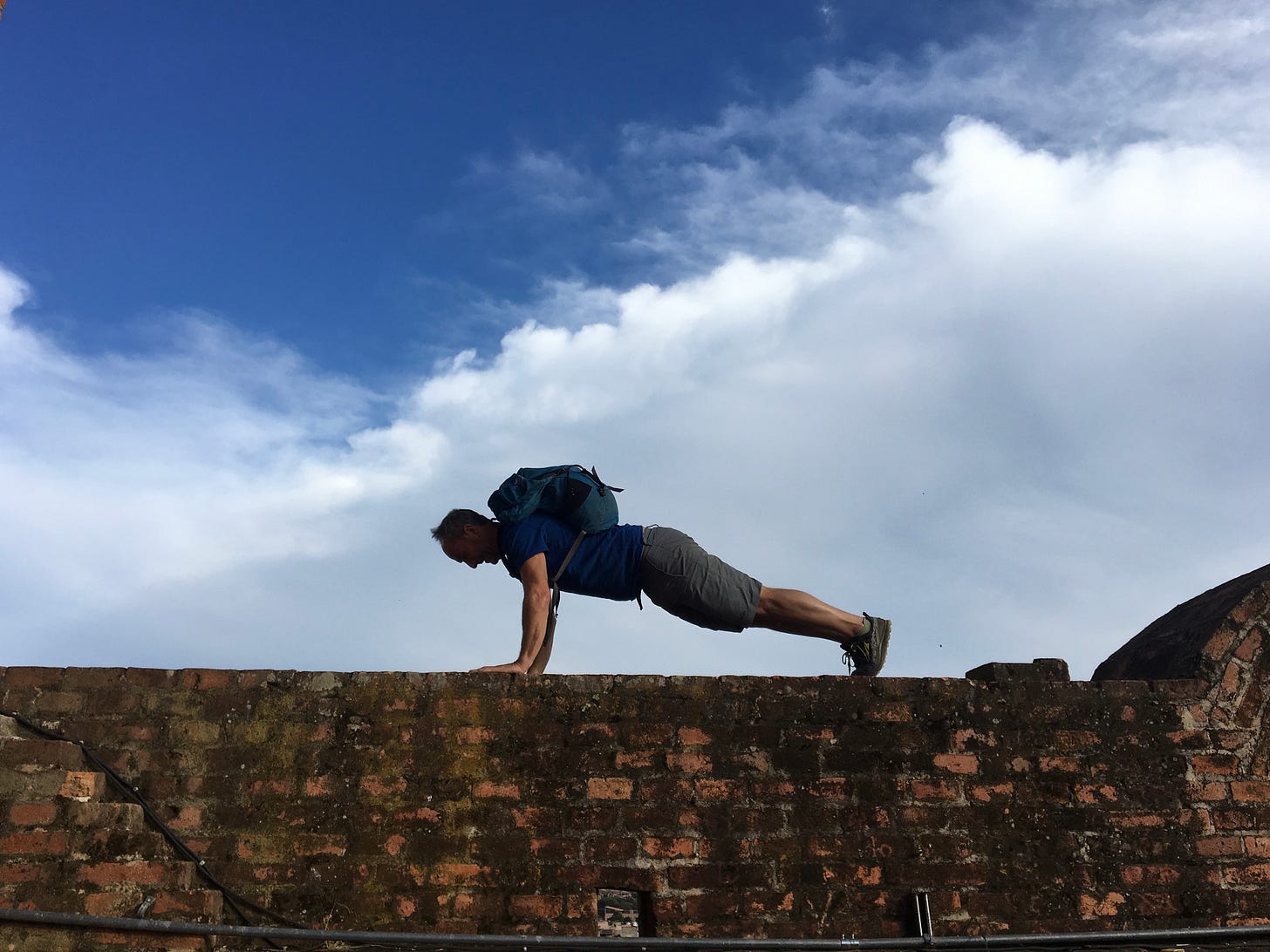

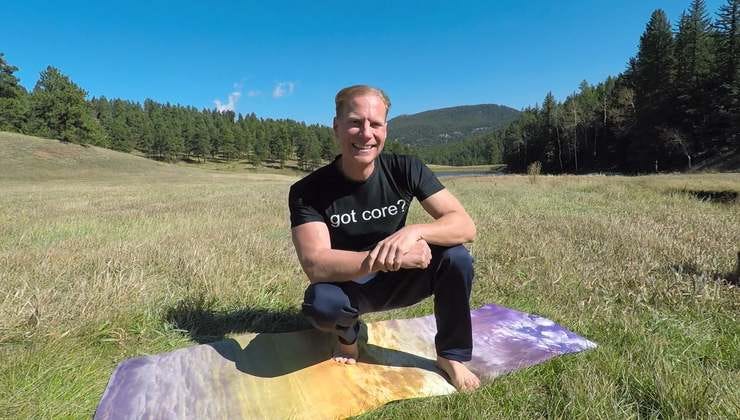
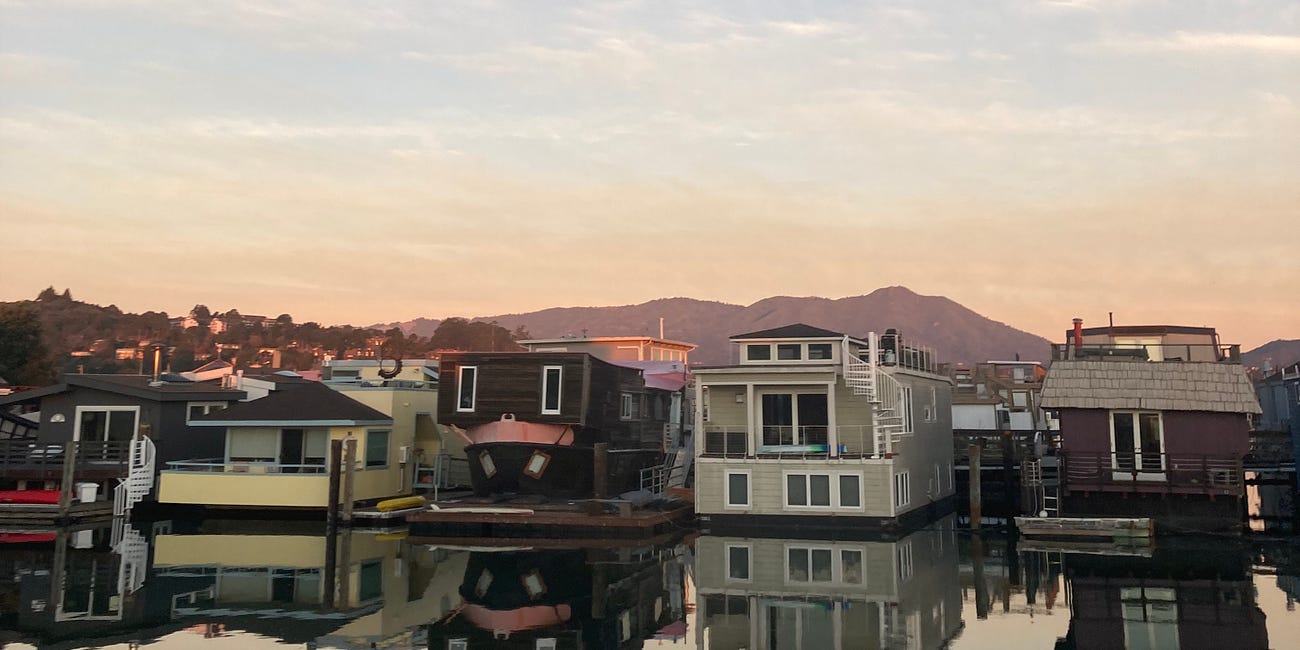
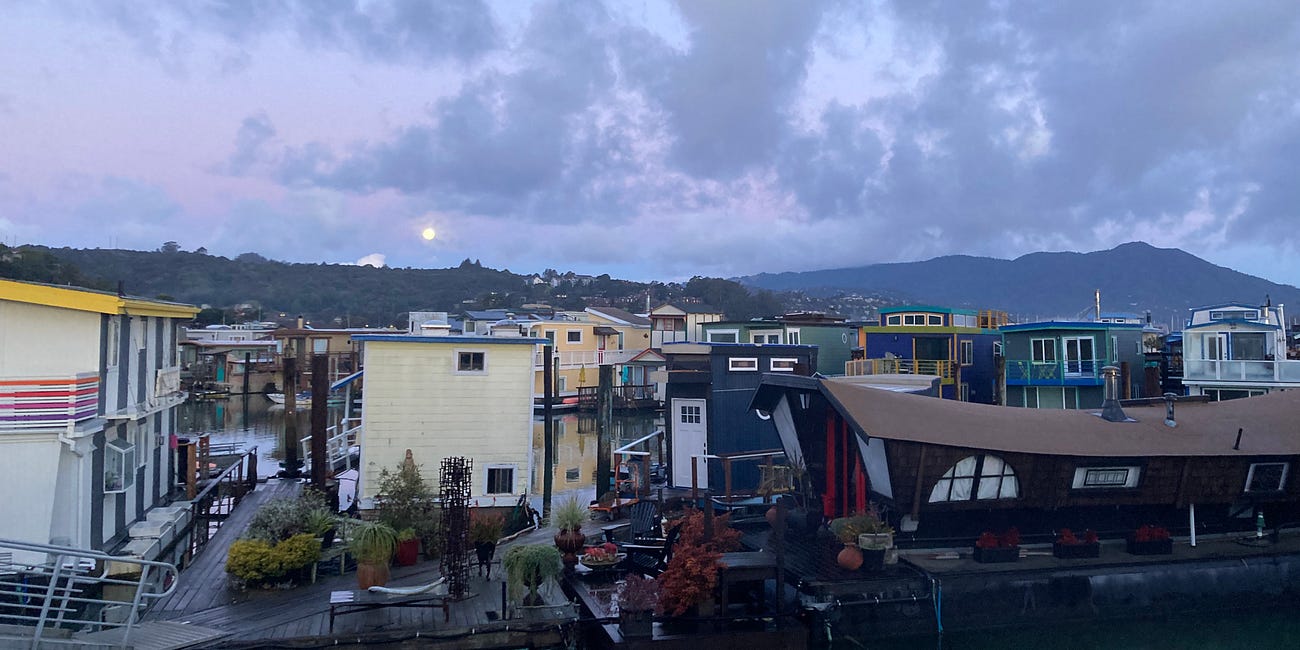

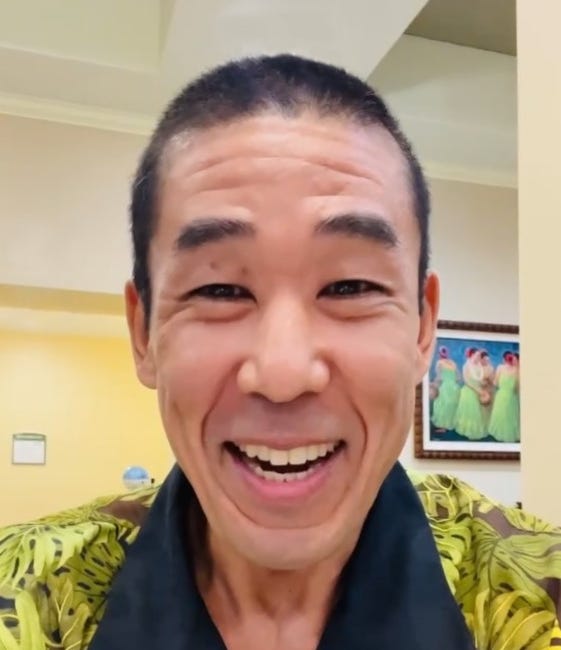
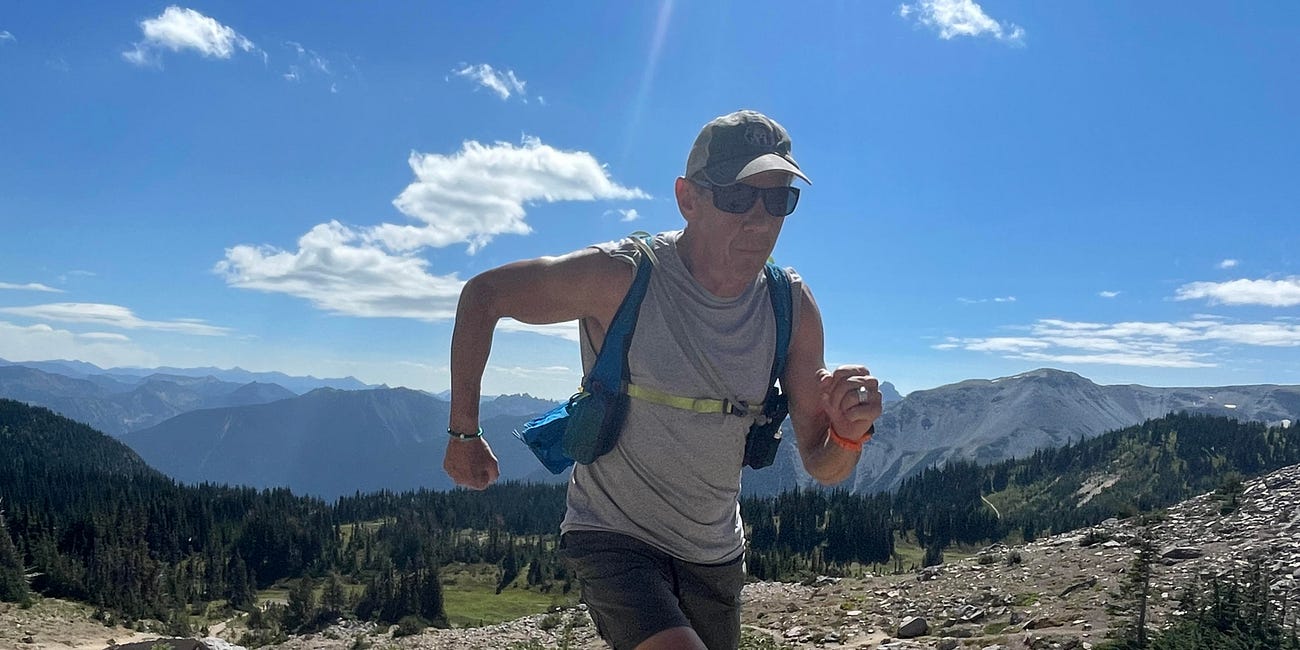
“I’ve known this for a long long time, but I was still trying to get away with it. The voice of “I don’t want to,” and “I can’t,” have been strong for me in certain realms of life for as long as I can remember.”
Man. You really have a way of connecting the human dots in a specific yet universal way. This one really felt like you were talking directly to me. Powerful stuff.
The Black Snake of Wounded Vanity
https://blacksnakeofvanity.substack.com/
Woo, hope that motivation-push lasts!